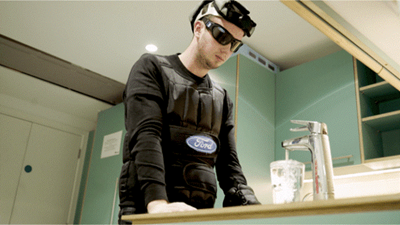Published: 27 November 2018

Many accidents on a yearly basis are caused by drowsiness, after a long day drivers can find themselves exhausted beyond belief but still have to drive for work purposes. Ford have commissioned the use of a “sleep suit” which shows the effects of driving with a lack of rest and the implications it can have behind the wheel.
According to researchers, fatigue is a major cause of up to 1 in 5 road accidents, staying awake for long periods can have an impact on our abilities on the road that can be just as hazardous as exceeding the drink driving limits in many countries. Ford have approved a “sleep suit” to be developed, this will allow drivers to experience the effects tiredness can cause while on the road.
For young people, transport accidents ae a main cause of death. Ford are hoping the suit will raise awareness among young drivers, with a plan to intergrate the suit into Driving Skills For Life, a free training programme for young drivers from 17-24.
“Drive when you’re tired and you risk driving like a zombie – becoming a danger to yourself, your passengers and everyone on the road around you,” Dr Gundolf Meyer Hentschel CEO of the Meyer Hentschel Institute said.
Dr Hentschel created the sleep suit. “Young adults very often subject themselves to “intentional sleep deprivation” – forcing themselves to stay awake so that they can juggle the demands of busy social lives, long working hours and studies for exams.”
”The suit partly consists of special goggles that simulate extreme exhaustion, including microsleeps – an uncontrollable response to tiredness. Microsleeps can result in those behind the wheel driving blind for 10 seconds or more, sometimes with their eyes still open, during which time they may have covered hundreds of metres. There may be no recollection afterwards that this has happened.”
By using a smartphone app, the goggles in the suit provide a simulation of the brain as it shuts down to rest. During this blackout period, drivers see nothing in front of them for 0.5 seconds and the longer a driver has been without sleep the longer this period can increase (up to around 10 secs). The suit has a cap, vest arm and ankle bands which together weigh over 18 kgs – which simulates the levels at which drivers are struggling at the wheel as they become more and more tired.
“We were determined to raise awareness of drowsy driving and the ‘Sleep Suit” is the perfect way to demonstrate this,” Ford DSFL Manager, Jim Graham told reports.
“Many people have been thankful that a friend or family member has volunteered to be the designated driver on a night out. But just because they haven’t been drinking doesn’t mean that they are safe to drive if, for example, they are exhausted after staying up all night.”
This can be a problem for many hauliers completing long journeys, as tiredness takes over further into a shift during which a delivery is due, to the point there is limited time to even take a break from the road.
Doctor Hentschel’s suggestion for those who are too tired to drive is to follow these steps:
- Pull over as soon as possible when it is safe
- Take 20 minutes rest and have a caffeinated drink
- If you do not feel refreshed and ready to return to the road a longer break is required, or a different means of completing your journey.